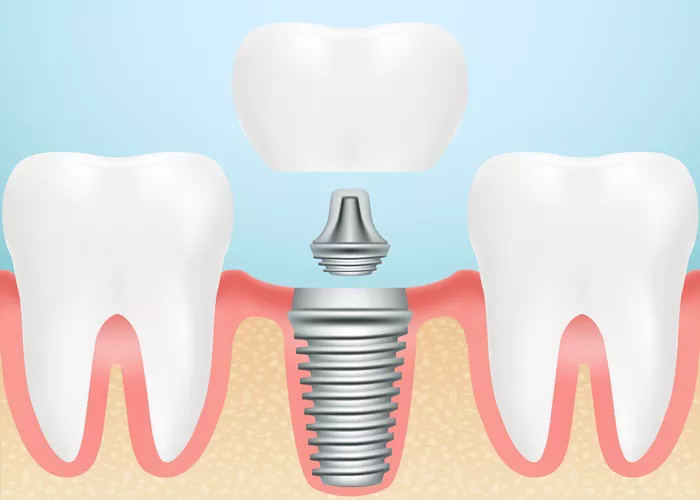Dental implants are a revolutionary method for replacing missing teeth, offering a stable, long-lasting, and aesthetically pleasing solution. They are designed to mimic the structure and function of natural teeth, providing patients with improved chewing function, better oral health, and a more confident smile. But how do these artificial teeth stay securely in the mouth? This article aims to provide a detailed and science-based explanation of how dental implants are placed and how they remain stable over time. By understanding the process, patients can make informed decisions about their oral health and the best treatment options for them.
Introduction to Dental Implants
Dental implants are small titanium posts that are surgically placed into the jawbone to replace missing tooth roots. Once the implant integrates with the bone through a process called osseointegration, it becomes a stable foundation for an artificial tooth or teeth. This integration is crucial for the success of dental implants, as it allows the implant to function like a natural tooth root, supporting the restoration while preventing bone loss and maintaining the surrounding oral structures.
The Process of Dental Implant Placement
Dental implant placement involves several steps, each of which is carefully planned and executed to ensure the success and stability of the implant.
Consultation and Evaluation
Before any treatment begins, patients undergo a comprehensive consultation and evaluation. This includes a thorough examination of the oral structures, medical history, and discussion of expectations and goals. X-rays, CT scans, or other imaging techniques may be used to assess the bone density, jaw structure, and the position of adjacent teeth and nerves.
This information helps the dentist to determine the best treatment plan, including the type, size, and number of implants needed.
Preparation and Surgery
Once the treatment plan is determined, the patient will undergo a surgical procedure to place the implant. This may involve removing any damaged teeth, bone grafting to increase bone density, or other preparatory steps. During the surgery, the dentist will create a small hole in the jawbone and carefully place the implant into the socket. The implant is then covered with gum tissue to allow it to heal and integrate with the bone over the course of several months.
Osseointegration
Osseointegration is the process by which the implant fuses with the surrounding bone tissue. This occurs naturally over time, with the bone cells growing around and into the titanium surface of the implant. The success of osseointegration depends on several factors, including the quality and quantity of bone, the implant design, and the patient’s overall health.
During this healing period, patients may be given temporary restorations, such as a removable denture or bridge, to maintain function and aesthetics.
Abutment and Crown Placement
Once osseointegration is complete, the next step is to attach an abutment to the implant. The abutment is a small connector piece that fits over the top of the implant and provides a stable base for the final restoration. A custom-made crown, bridge, or denture is then attached to the abutment, completing the dental implant process. The restoration is designed to match the shape, size, and color of the patient’s natural teeth, providing a seamless and natural-looking result.
How Dental Implants Stay Stable
The stability of dental implants is achieved through a combination of osseointegration, implant design, and proper care and maintenance.
Osseointegration
As mentioned earlier, osseointegration is the key to the stability of dental implants. The titanium surface of the implant integrates with the surrounding bone tissue, creating a strong and durable bond. This bond allows the implant to support the restoration while preventing bone loss and maintaining the surrounding oral structures. Over time, the bone continues to grow and adapt to the presence of the implant, further enhancing its stability.
Implant Design
The design of dental implants also plays a crucial role in their stability. Modern implants are designed with advanced materials and technologies to maximize osseointegration and minimize the risk of failure. For example, implants with a roughened surface texture or a special coating can enhance bone growth and integration. Implants are also available in various sizes and shapes to accommodate different jawbone structures and restoration needs.
Proper Care and Maintenance
Proper care and maintenance are essential for the long-term success and stability of dental implants. Patients should follow a regular oral hygiene routine, including brushing and flossing, to keep the implant and surrounding tissues clean and healthy. Regular dental check-ups and cleanings are also recommended to monitor the health of the implant and address any potential issues before they become serious. Additionally, patients should avoid habits that can damage the implant or surrounding tissues, such as smoking, chewing hard objects, or using excessive force when biting or chewing.
Conclusion
Dental implants are a highly effective and popular treatment option for missing teeth, offering improved chewing function, better aesthetics, and preservation of the surrounding bone and tissue. However, they are not suitable for everyone, and patients should carefully consider their options before making a decision. By understanding the process of dental implant placement, the factors that contribute to their stability, and the potential risks and benefits, patients can make informed decisions about their oral health and the best treatment options for them. Proper care and maintenance are essential for the long-term success and stability of dental implants, and patients should follow a regular oral hygiene routine and schedule regular dental check-ups and cleanings. With proper care, dental implants can provide a durable and aesthetically pleasing solution for missing teeth, enhancing a patient’s overall oral health and quality of life.
Related topics:

